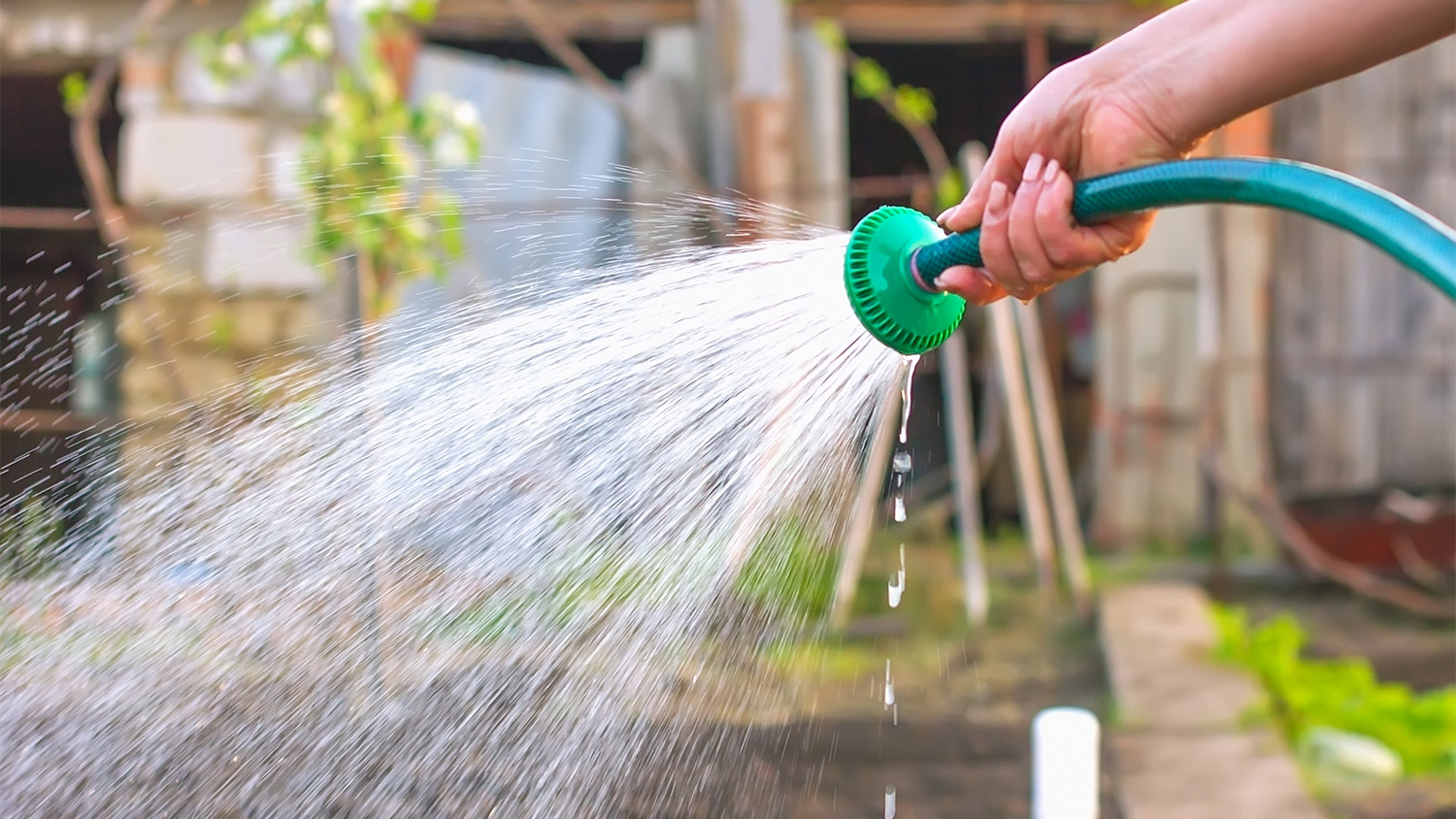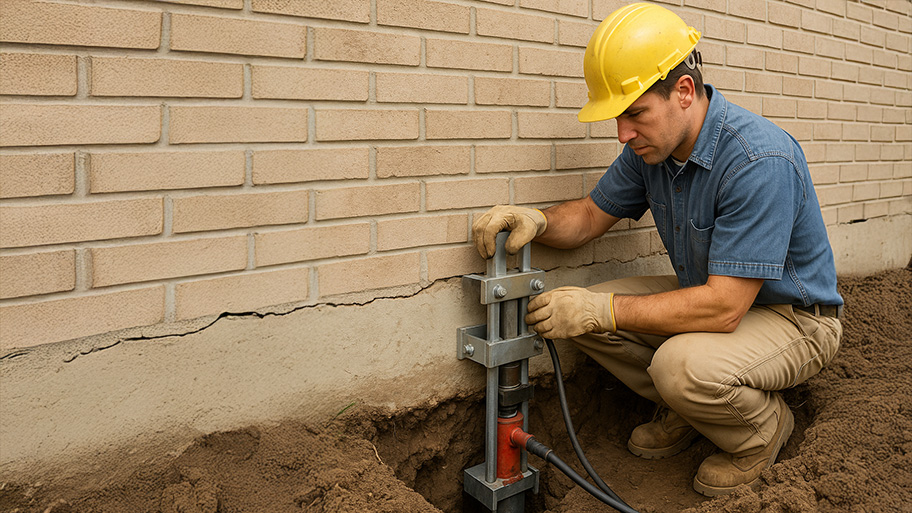
A foundation for a new-build home averages around $11,000. Find out all the factors that affect the cost of a foundation and how to save money.
Prolonged droughts can have devastating consequences on your home
When drought happens, the soil shrinks, making gaps in the ground.
The foundation often settles in the new gaps due to gravity.
Watch out for signs of cracking or sloping and treat them ASAP to prevent costly foundation repairs.
Staying vigilant can save the foundation of your home from the impact of a drought.
If your area is experiencing a drought, it can affect many aspects of your daily life. However, you may not realize that it can have some devastating effects on your home, too. Extremely dry weather can lead to infrastructure and foundation damage, among other issues.
Knowledge is power, though, so be aware of the effects a drought can have on your home and how to perform basic foundation maintenance to keep it safe.
Drought can lead to a variety of foundation problems, from structural cracks to uneven floors in your home. Issues typically stem from the affected soil surrounding your foundation. As clay-heavy soil dries out in times without rain, it shrinks, causing a potential shift in the earth supporting your foundation.
Gaps can form around the edge of your home, exposing more of your foundation to air, heat, and other problems such as pests. When left unchecked, extreme shifts in your foundation can lead to cracks in pipes, uneven door frames, windows that won't close, and even bowing floors.
The soil underneath your home's foundation comes in different types, and each reacts differently to various weather conditions. The three basic categories of soil based on size and mineral composition are sand, silt, and clay. Usually, the soil beneath your house will be a mixture of the three.
When clay-heavy soil expands and fills up with rainwater, it becomes what is known as expansive soil. Expansive soil can be problematic since it can swell and grow when moisture changes. This type of soil can also shrink when a drought is present, causing problems with your foundation. While some foundation settlement is normal, a drought can make these changes happen much faster and negatively affect your foundation without proper support.
Climate plays a big role in the health of your home's foundation. During droughts, the soil can shrink and pull away from the foundation, causing settlement and cracks. Too much moisture can make the soil expand and put pressure on the foundation, which can also lead to cracks or shifts.
If your area is experiencing uncommonly dry weather and your home shows signs of drought stress, you may have a case of foundation damage. By understanding the changes happening underground, you'll be able to tell when you notice signs that your home is settling.
It's important to inspect your home regularly to check for damage by a local foundation repair team and address any issues before they progress beyond repair. These are some common signs your home suffers from foundation problems due to drought.
These can manifest in many ways. Look out for any visible cracks on the wall, the brickwork, or the house’s siding. You may also notice cracks in tiles, stucco, or drywall. The cracks can also show in the sidewalk, driveways, and patios around the house, so keep any out when you go outside. Speaking of, you may also notice cracks or movement in your chimney.
Although it's not easy to spot, sloping floors or splits are signs that your foundation is settling. If you suspect that the floor is uneven, look for cracks in the basement floors or ceilings.
You can also conduct a quick check with the marble test: place a marble in the middle of the floor and see if it rolls to one side. This test isn’t a perfect system, but it can give you an idea of any potential issues. You can also break out a bubble level.

Walk around your house and see if you notice any gaps between the soil and the bottom of the concrete foundation. If you find signs of shrinkage, there are some things you can do to try to prevent it from getting worse, such as gentle watering.
If doors and windows are stuck or don't align properly in their frames, these are signs that your foundation is affected by drought.
Foundation issues during droughts can also lead to broken pipes. Not only can this be a sign of foundation issues, but it can also lead to additional problems with your plumbing.
Be sure to regularly inspect your home's foundation for signs of damage. Even small indicators of drought stress can accumulate into significant damage.
Call a foundation repair specialist right away if you notice any of the signs of foundation issues related to drought.
When the drought ends and rain starts pouring after a long time, it can actually have some negative effects.
The expansive soil will absorb the water and can swell quickly in a short time. This rapid change in the soil can push your foundation up—not always evenly– and even cause flooding in your basement.
Droughts can happen almost anywhere and can lead to many different issues, so it’s better to understand the risk in advance.
The cost of foundation repairs can reach $100,000 or more, and homeowners’ insurance doesn’t often cover these costs. Being proactive about your home and taking measures to prevent foundation issues can help you protect your home and avoid thousands of dollars of damage.
These are some protective measures you can take:
Water soil: Prevent drought soil shrinkage by hydrating the ground around your foundation using a soaker hose. Be careful not to flood the earth. Gentle watering throughout the day will prevent soil from shrinking.
Plant trees away from your foundation: Tree roots compete for water during dry periods and affect the foundation if they are close to the house.
Guard the foundation: The right structural solution can secure your house and preserve your investment.
Schedule an inspection: Hiring a foundation contractor is the best way to ensure your foundation is set up for the next drought. Speak with a pro about additional steps you can take for your unique design.
From average costs to expert advice, get all the answers you need to get your job done.

A foundation for a new-build home averages around $11,000. Find out all the factors that affect the cost of a foundation and how to save money.

Foundation repair costs can be tricky when you have a large repair on your hands. This guide walks through costs from small cracks to total replacement.

Whether trying to protect it or transport it, raising a house is no small feat. Read on to find out everything you need to know about the cost to raise a house.

Need help identifying foundation damage? Learn about the signs of foundation issues, the underlying causes, and what to do if you find them in your home.

Identifying foundation issues early is the best way to avoid severe, expensive damage. Use this foundation inspection guide to check for budding problems.

Keep your home’s crawl space in good condition to prevent pests, moisture problems, and structural damage. Use this checklist to guide your inspection.